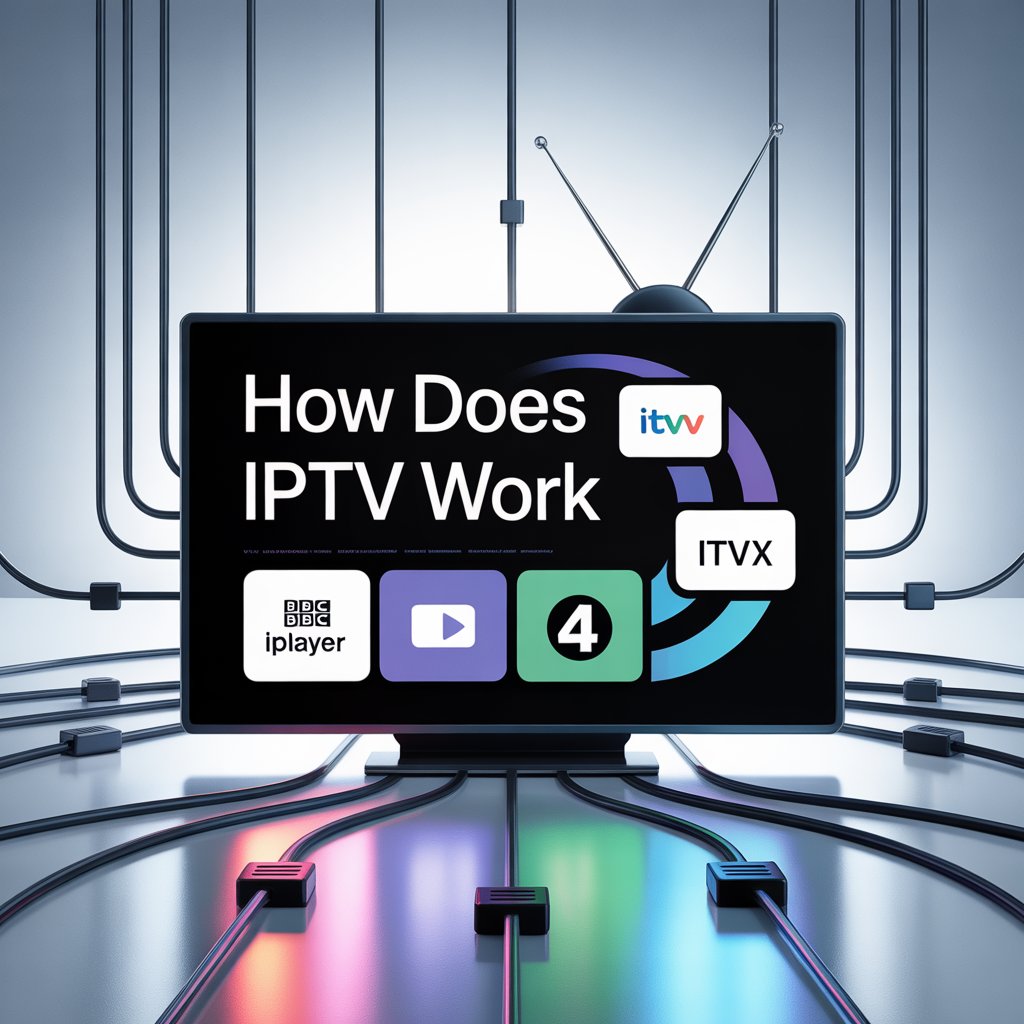how does iptv work

How Does IPTV Work?
Introduction to IPTV
IPTV, or Internet Protocol Television, is reshaping how we consume media. Unlike traditional broadcasting, IPTV uses the internet to deliver video and audio content directly to users. This method offers flexibility, personalization, and interactivity beyond what cable or satellite TV can provide.
In this blog, we’ll dive deep into how IPTV works, the technologies that power it, the legal landscape, the different types of services, and what the future holds for this increasingly popular way to watch TV.
The Technology Behind IPTV
IPTV relies on sending digital television signals through IP networks. This is similar to how websites and data are sent over the internet. Content is delivered via a high-speed broadband connection, encoded in digital packets, and streamed using various protocols.
Servers encode and store the media files using codecs like H.264 or H.265 to reduce bandwidth usage. These files are then delivered to users through real-time streaming or downloadable formats.
IPTV vs. Traditional Broadcasting
Traditional broadcasting uses terrestrial, satellite, or cable methods to deliver TV content. It follows a linear programming model, meaning shows air at set times, and viewers must tune in accordingly.
IPTV, by contrast, allows for on-demand content, time-shifted TV, and live streaming with interactive capabilities. Viewers have greater control over what they watch and when.
Types of IPTV Services
- Live IPTV: Real-time broadcasting of TV channels.
- Video on Demand (VOD): Watch movies or shows whenever you choose.
- Time-shifted TV: Rewatch or pause live broadcasts.
- Catch-up TV: Replay recently aired programs.
How IPTV Works Step-by-Step
- Content is acquired and encoded into a compressed digital format.
- The content is stored on a central server or distributed network.
- Users connect via a device (TV, smartphone, set-top box) using an app or software.
- The server delivers the video stream through the internet in real-time.
- The user’s device decodes and displays the stream.
Key Protocols and Formats
Several protocols are crucial to IPTV:
- RTSP (Real-Time Streaming Protocol): Controls the streaming session.
- HLS (HTTP Live Streaming): Used by Apple, segments video into chunks.
- MPEG-DASH: Adaptive streaming based on bandwidth.
Common video formats include MP4, MKV, and container formats using H.264 or H.265 codecs.
Devices and Software Needed
To access IPTV, users typically need:
- A stable internet connection (10 Mbps or higher recommended).
- A compatible device such as a Smart TV, PC, smartphone, or IPTV set-top box.
- An IPTV player app like VLC, IPTV Smarters, or TiviMate.
- A valid IPTV subscription or M3U playlist.
Legal Considerations
Not all IPTV services are legal. Many unauthorized providers stream copyrighted content without proper licenses, which is illegal in many countries.
Always choose legal IPTV services offered by reputable providers or broadcasters, such as Hulu Live TV, YouTube TV, or services included with your ISP.
Pros and Cons of IPTV
Advantages
- Flexibility to watch what you want, when you want.
- Interactive features like pause, rewind, and record.
- Broad range of content, including international channels.
Disadvantages
- Requires a reliable internet connection.
- Some services may have latency or buffering issues.
- Legal risks if using unauthorized providers.
The Future of IPTV
The IPTV industry is expected to grow rapidly as more people cut the cord on traditional cable. As 5G, fiber optics, and advanced compression technologies become mainstream, IPTV will become even more seamless.
Innovations like AI-powered recommendations, integration with smart home ecosystems, and immersive content (e.g., VR TV) are poised to redefine how we experience television.
Conclusion
IPTV marks a significant shift in how we access television and media. With the convenience of internet-based delivery, it puts control in the hands of the viewer. As long as consumers stay informed and use legal sources, IPTV can offer a superior viewing experience tailored to their needs.
